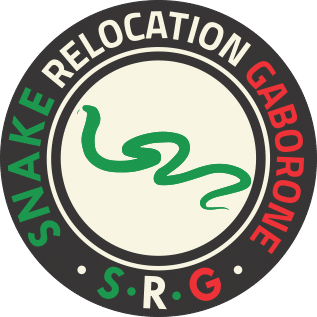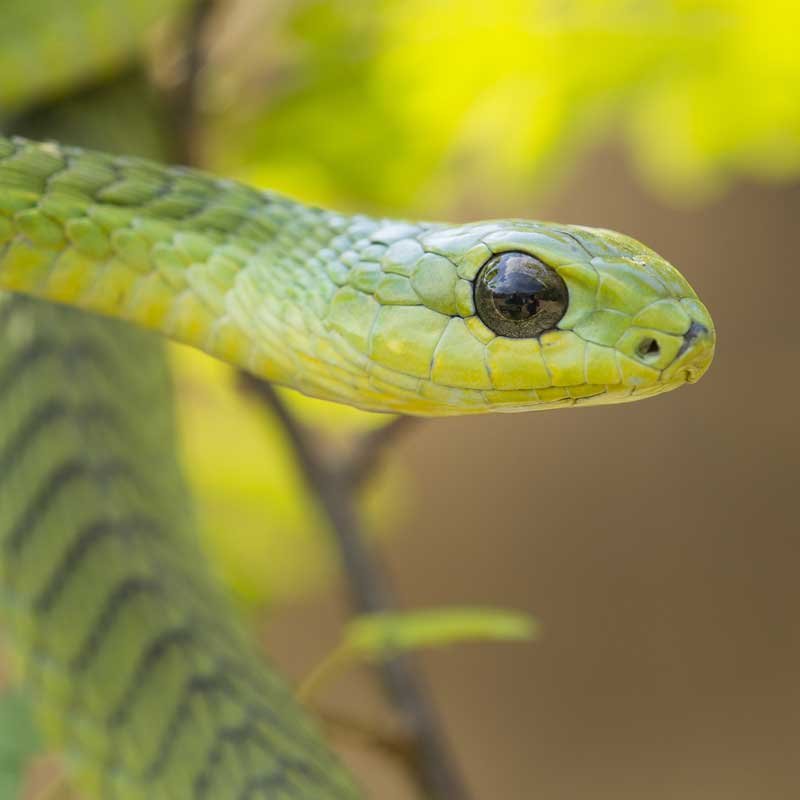Introduction
In the heart of Botswana’s diverse ecosystems — from the riverine forests of the Chobe to the acacia-dotted savannahs of the Kalahari — thrives one of Africa’s most graceful and elusive snakes: the Boomslang (Dispholidus typus). Though often feared due to its potent venom, the Boomslang is a shy, non-aggressive species that plays an essential role in balancing local biodiversity.
What is a Boomslang?
The Boomslang, meaning “tree snake” in Afrikaans, is a slender, arboreal (tree-dwelling) snake that can grow up to 2 meters in length. It is recognized by:
-
Large eyes with excellent binocular vision
-
A highly flexible body perfect for climbing trees
-
Color variations: Males are usually bright green with black or blue scaling; females tend to be brown or olive
Their camouflage makes them nearly invisible in treetops, which is why they are rarely seen unless disturbed.
Habitat and Distribution in Botswana
Boomslangs are widespread across Botswana, especially in woodland and savanna areas. They are often found in:
-
Riverine forests near the Okavango Delta
-
Mophane woodlands in northern Botswana
-
Suburban gardens in areas like Gaborone and Maun, where birdlife is abundant
These snakes are diurnal (active during the day) and spend most of their time in trees, hunting birds, lizards, and chameleons.
Venom and Misconceptions
Boomslangs possess hemotoxic venom, which affects blood clotting and can lead to internal bleeding. However, bites are extremely rare due to their shy nature. They:
-
Deliver venom through rear-fangs (opisthoglyphous), requiring a strong bite for envenomation
-
Rarely bite unless handled or provoked
-
Have been responsible for very few recorded fatalities in Africa
One of the most famous cases was the death of herpetologist Karl Schmidt in 1957, which helped scientists understand the true potency of Boomslang venom.
Importance in the Ecosystem
As bird and lizard predators, Boomslangs help control populations of common species, maintaining balance in the ecosystem. Their presence is an indicator of a healthy, functioning woodland or savanna environment.
Conservation and Coexistence
Boomslangs are not considered endangered, but habitat destruction and human fear contribute to their decline in some areas. In Botswana:
-
Education and awareness through wildlife programs help reduce unnecessary killings
-
Snake relocation efforts, like those in Gaborone and sorrounding areas, protect both people and snakes
-
Eco-tourism and safaris can benefit from promoting understanding of reptile biodiversity
If you encounter a Boomslang, do not panic. Back away slowly and contact a local snake handler for safe removal if needed.
Final Thoughts
Botswana’s Boomslangs are not enemies — they are silent guardians of our woodlands, keeping the balance of nature intact. Understanding their behavior and habitat is the first step toward peaceful coexistence. Next time you walk beneath a canopy or rest near a bushveld tree, remember that one of Africa’s most remarkable reptiles might be watching — not to harm, but simply to survive.



0 Comments